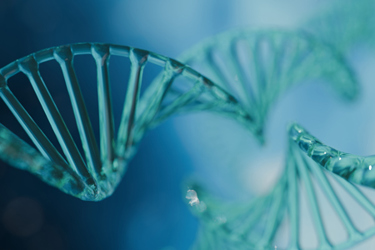Designer Microbes: Can Synthetic Biology Supercharge Wastewater Treatment?
By Christian Bonawandt

Exploring the potential of bioengineering as a pathway to pollution remediation.
An ever-evolving number of challenging chemicals are entering the environment each year. While commercial and municipal wastewater technologies continue to advance as well, many of these chemicals continue to be difficult to treat and remove. These include long-standing industrial pollutants such as heavy metals (e.g., chromium, cadmium, lead, copper, zinc, nickel), various dyes, and hydrocarbons (like phenol, benzene, toluene, and more), as well as emerging contaminants including pesticides, pharmaceuticals (e.g., diclofenac, enrofloxacin, β-estradiol), microplastics, polychlorinated biphenyls (PCBs), and so many more.
Conventional physical and chemical treatment methods, such as sedimentation, filtration, and chemical precipitation, often fall short in effectively treating new and diverse pollutants. Meanwhile, traditional biological methods like microbial remediation and aerobic/anaerobic treatment processes struggle with incomplete breakdown of organic pollutants and limited suitability for many of these contaminants.
As such, many researchers are investigating the possibilities with synthetic biology. In the past few years, researchers have engineered microbes, including varieties of bacteria and algae, that can break down or neutralize specific pollutants such as heavy metals and hydrocarbons. For instance, Pseudomonas veronii –– a generally harmless bacterium commonly found in soil and water –– has been shown to reduce cadmium concentrations1 by 100%, and Pseudomonas putida, a similar bacterium, can reduce phenol concentrations by 92%. Genetically modified Pseudomonas putida has demonstrated a 75% pollutant removal rate compared to 40% for its wild counterpart.2 Meanwhile, Bacillus subtilis, a harmless bacterium so common that it’s often found in human and animal guts, can be engineered to degrade 85% of aromatic compounds and 70% of aliphatic hydrocarbons. Similarly, E. coli can be enhanced to degrade a range of organic pollutants.
Bioengineering Technologies Are Expansive
As the field of bioengineering continues to evolve, so too is the variety of methods and technologies for producing environmental remediation and wastewater treatment solutions. Synthetic biology, in particular, is changing how researchers approach these challenges by allowing biological systems to be redesigned for specific tasks.
At the heart of many bioengineering solutions are genetically modified microorganisms, such as bacteria like E. coli and Bacillus subtilis and yeast like Saccharomyces cerevisiae. These “chassis” organisms are chosen due to their rapid growth rates and ease with which scientists can manipulate their genetic code to serve new functions.
The ability to precisely control gene expression is crucial to bioengineering solutions. Genetic circuits regulate cellular functions like light switches, while transcription factors activate or repress gene activity. Tools like CRISPR-Cas3 allow for highly precise modifications to DNA, enabling the deletion, correction, or insertion of genes. This is vital for enhancing metabolic pathways that degrade pollutants. For instance, CRISPR-Cas9 has been used to improve biotransformation efficiency in Bacillus licheniformis.4 Other tools like zinc-finger nucleases (ZFNs) and transcription activator-like effector nucleases (TALENs) can also target DNA modifications.
Some of the ways that researchers are “upgrading” microorganisms include:
- Optimizing degradation pathways. Using the tools mentioned above, scientists can build or optimize new ways for microorganisms to digest and break down pollutants. They do this by introducing genes that encode specific enzymes to target specific chemicals. Computational tools and databases are used to help predict effective decomposition pathways and identify the most suitable enzymes.
- Enzyme engineering. Enzymes themselves can also be customized to help convert toxic compounds into harmless ones. Recombinant DNA technology can be used to modify and produce large quantities of enzymes (e.g., laccase) with improved activity and stability, making them ideal for onsite bioremediation.
- Synthetic microbial consortia. Instead of relying on a single organism, synthetic microbial consortia5 combine cultures of multiple microbial species. Each species contributes to a part of the degradation process. This allows them to break down complex chemicals that a single strain could not. For example, one such study used engineered Rhodococcus erythropolis OSDS1 to make hydrocarbons more soluble and bioavailable, while a combination of four other microorganisms produced unique enzymes that targeted various parts of the hydrocarbon mixture.
Beyond treating and remediating pollutants, synthetic biology can also be used for pollution monitoring and control through the development of biosensors.6 These are genetically engineered microbes or other biologics that can detect certain environmental signals and convert them into measurable outputs. In addition, biofilms, which are aggregated microbial communities encased in an extracellular polymeric substance, have been used in wastewater treatment for many years. Biofilms can survive harsh environmental conditions and enhance pollutant degradation due to increased bioavailability to degrading organisms.
Limitations To Commercialization
Despite these advancements, bioengineered solutions face an uphill battle to full-scale implementation. For example, the risk of synthetic genes transferring to the environment raises ethical concerns, due to the potential to disrupt existing biospheres. In addition, researchers in many of the studies cited above found it difficult to maintain consistent performance amidst fluctuating environmental conditions, such as pH, temperature, nutrient availability, and competition with native microbes. While laboratory efficiency of synthetic biology can be enhanced, most studies show these solutions still struggle to outperform natural strains in real-world conditions. Other limitations include the high cost of production and deployment for some technologies, the time-consuming nature of biological processes compared to some alternatives, and the complexity of fully understanding microbe-pollutant and microbe-microbe interactions in complex environments. Still, this is a field of study with tremendous potential for wastewater treatment and pollution remediation.
References:
- https://neptjournal.com/upload-images/(14)B-4191.pdf
- https://www.afjbs.com/uploads/paper/a365f16f85afcd706c3ea470ec72ff1b.
- https://healthinformaticsjournal.com/index.php/IJMI/article/view/787
- https://www.frontiersin.org/journals/bioengineering-and-biotechnology/articles/10.3389/fbioe.2022.1104914/full
- https://neptjournal.com/upload-images/(14)B-4191.pdf
- https://www.ciwem.org/the-environment/how-genetically-modifiedorg
About The Author
 Christian Bonawandt is an industrial content writer for Water Online. He has been writing about B2B technology and industrial processes for 24 years.
Christian Bonawandt is an industrial content writer for Water Online. He has been writing about B2B technology and industrial processes for 24 years.
